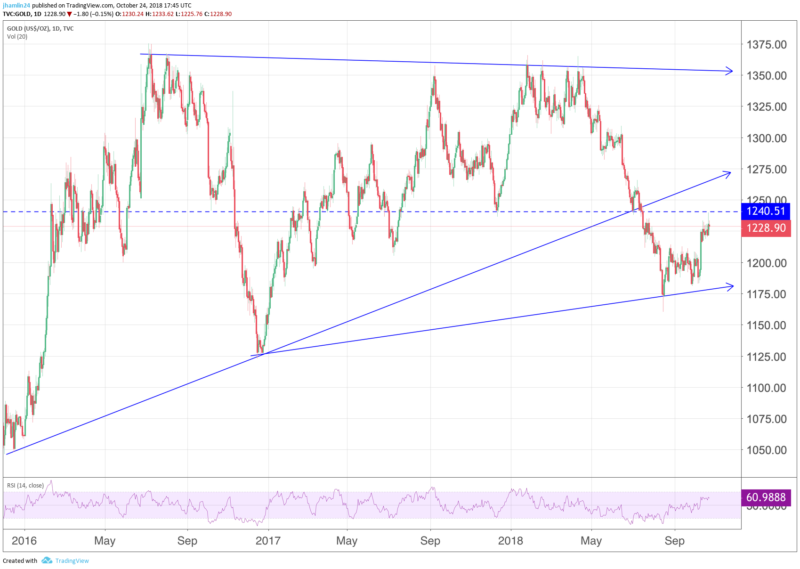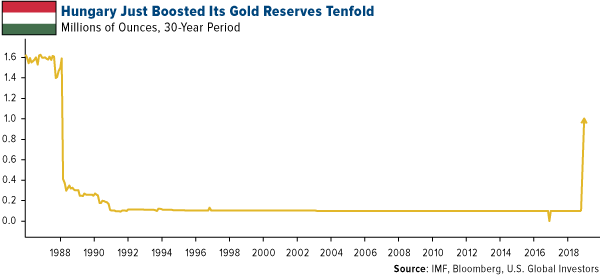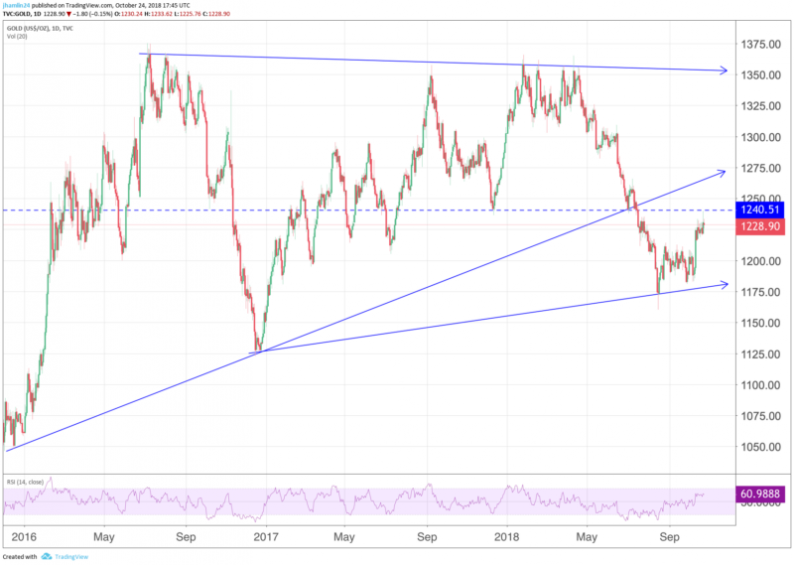The gold price has been rising over the past month, driven by investors seeking safe-haven assets as the stock market sells-off sharply. On the technical chart, we can see a bottoming pattern followed by a price spike higher. I am now looking for gold to break above resistance at $1,240, which was support twice in the past year. Major support levels often turn into resistance on the charts and overcoming such resistance levels can lead to an inflow of funds from technical traders.

We ideally want to see the gold price climb back above the longer-term support trend line around $1,275. The next major resistance after that is key resistance at $1,365, which has been a top multiple times over the past few years. If the gold price can break above $1,365, it would signal the next bull cycle has started and paved the way for a multi-year run back toward all-time highs. The RSI momentum indicator has room to run higher before becoming overbought, increasing the odds of the price taking out resistance in the near term.
Central Banks Buying Gold Aggressively
Hungary’s central bank announced it has increased gold holdings tenfold, from 3.1 metric tons to 31.5 tons! Hungarian central bank governor Gyorgy Matolcsy described the move as one of “economic and national strategic importance,” adding that the extra gold made the country’s reserves “safer” and “reduced risk.” This is the first time since 1986 that Hungary has increased its gold holdings, making it a significant event for Hungary and a potential sign of things to come from other nations.

Hungary isn’t alone in its mission to diversify via increasing gold reserves. Last week we learned that Poland became the first European Union (EU) member to increase its gold reserves in two decades. The National Bank of Poland (NBP) acquired gold in two batches: two tonnes in July and seven tonnes in August, according to IMF data. Poland’s gold bullion reserves now stand at the highest level since at least 1983.












Leave A Comment